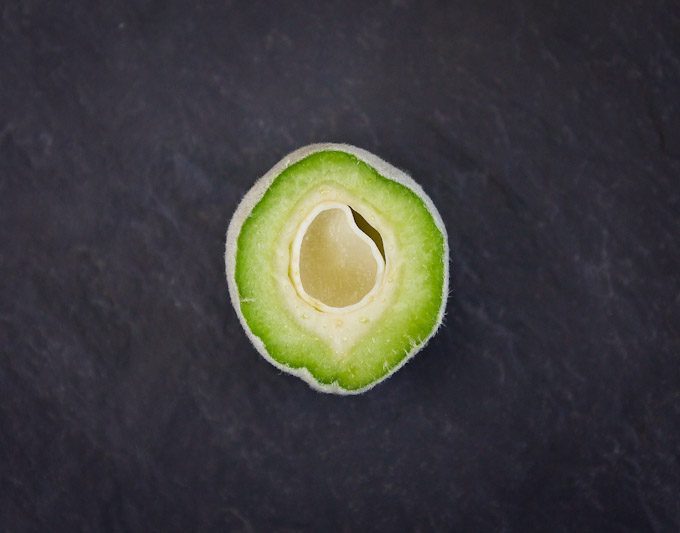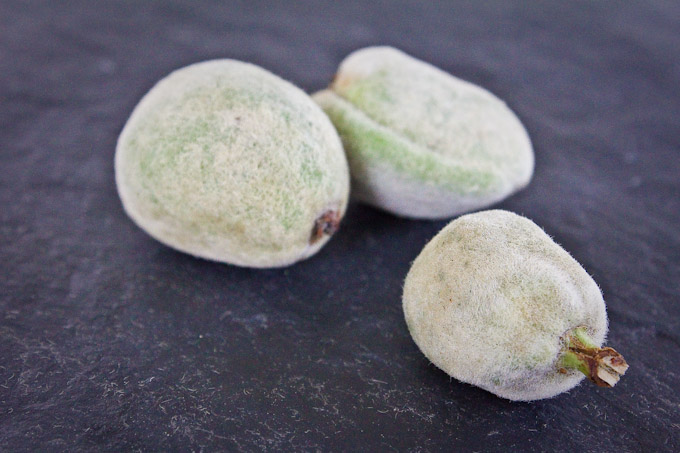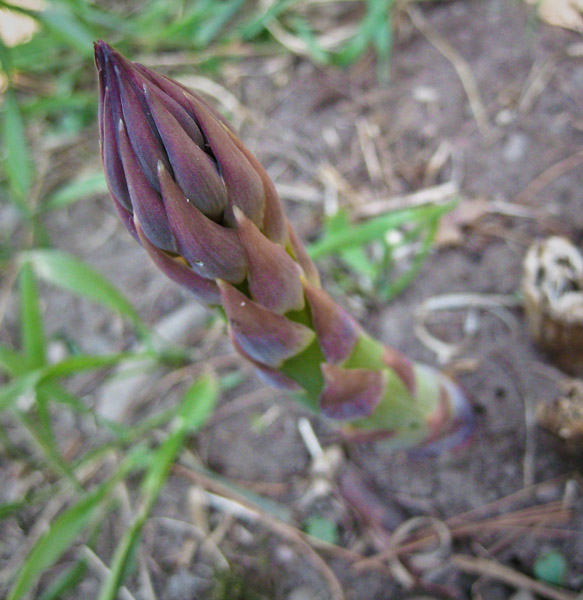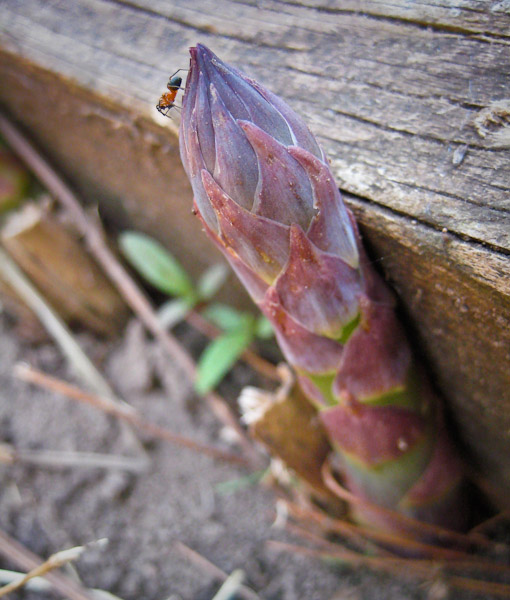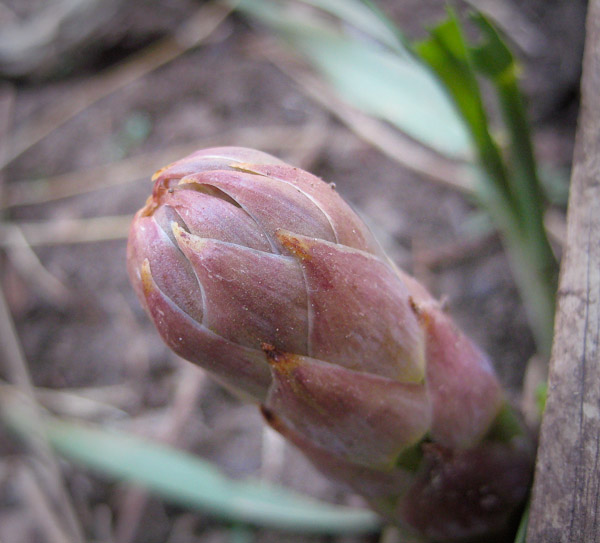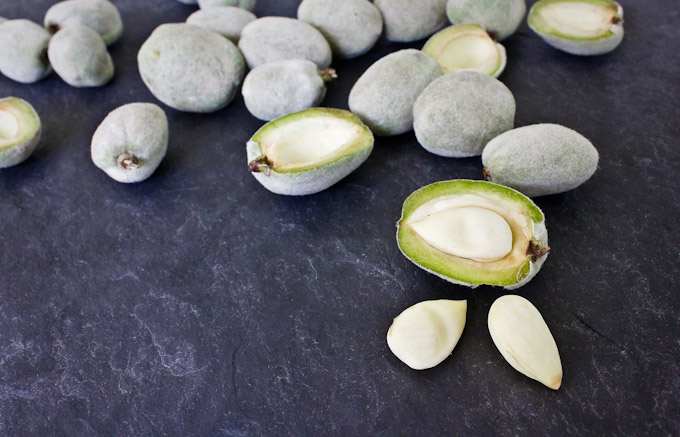 Recently I was in the Batali/Bastianich Italian food megastore Eataly in NYC. Always a recipe-provoking stop, particularly mid-week when not utterly tourist-jammed and you can actually see the counters and food. The variety of food and ingredient offerings is as impressive as the block-wide size of this culinary cathedral. Rarely do I go there and not see something I have never encountered previously. Never have I been able to leave there empty handed. 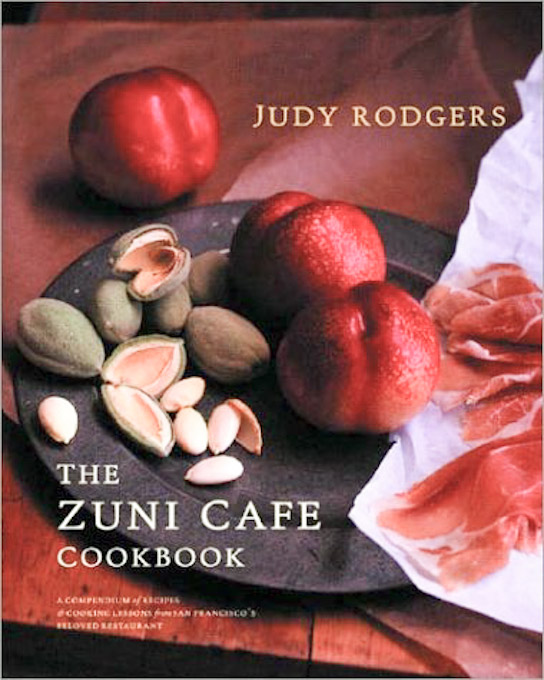 On this balmy day I came across a long basket of fuzzy green almonds. The only other time I've seen them was on the cover of my beloved Zuni Cafe cookbook On this balmy day I came across a long basket of fuzzy green almonds. The only other time I've seen them was on the cover of my beloved Zuni Cafe cookbookSo into my basket went a half pound. After a little investigating, I learned that these green almonds were the unripe fruit of the almond tree, and while green, the outer flesh, and in turn entire fruit, is edible. The green-fuzzy flesh is firm and crisp, much like biting into an unripe peach--of which they are a relative and bear a striking resemblance in this form. The inside almond nut, with which we are much more familiar, was still pale white, soft and jelly-like on the inside. Biting into that was like a sliver of a firm grape, with just the slightest burst of moisture. None of the flavors are particularly strong, but just fresh and green and vital. The outside flesh tastes much like a cross between an unripe peach and a fresh-picked raw green bean. The center jellied nut was slightly sweeter with just a hint of sour, but again, nothing overpowering. But the combination of textures and herbaceous qualities I found thrilling and unable to put down. Green almonds are popular in many Middle Eastern cuisines, simply dipped lightly in a dish of salt as they are eaten. This way was my favorite. Like many of their green baby spring cohorts, these green almonds are only available for a brief eight week season from mid-April to mid-June. I was a little late to the party too this year, but keep your eyes out this week and definitely snap some up if you come across them. Put them on your radar for next year regardless. | ||||||||||||||||
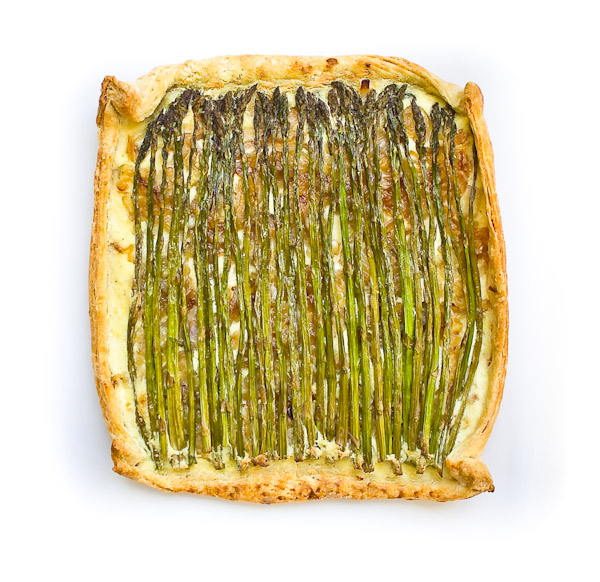 As hinted at earlier this week, asparagus is bustin' out all over on our micro-farm. One of the very first signs of a long season of fresh food from the gardens, this perennial faithfully returns each May, basically without us having to do a thing. (That's my kind of garden vegetable!) Since it is never better than right now, we'll eat just-picked asparagus almost every night for dinner for the next several weeks. Then finally, when we can't stand it anymore, which fortunately is right about when the asparagus season peters out, we'll put our asparagus habit to bed for another 11 months. Once you've had it this fresh and this good, you are spoiled for anything trying to masquerade as asparagus in the rest of the year. But it is a challenge to keep it interesting in the dinners ahead. Even as good as it is, when having asparagus almost nightly, sauteing, grilling, and soup-ing gets old quickly. This savory galette was a very welcomed change, and was gobbled up quickly last evening. It would also be wonderful for brunch, or cut in small squares for late spring hors d'oeuvres. I have been on a galette with corners kick this year, but feel free to form it in the more traditional round shape, or any free-form shape that works for you and your stalks.
| ||||||||||||||||||||||
| ||||||||||||||||
 The first inch and a half of Victoria rhubarb poking up from the muddy March ground. Pies and jams to follow. | ||||||||||||||||
Here's a great little dish using those irresistable watermelon radishes and microgreens now growing at a farmers' market near you. Ready in under a half hour, this would be a deceptively easy, super impressive first course for a local-chic dinner soiree. Or triple the scallops, and pair it with cool buckwheat soba noodles dressed with sesame vinaigrette and sprinkled with additional microgreens for a light and springy main course. Either way it uses some of the best items our farmers are offering up at this moment. And after months and months of braised root vegetables, some very welcome fresh leafy crunchy variety.
[caption id="attachment_2004" align="aligncenter" width="600"] 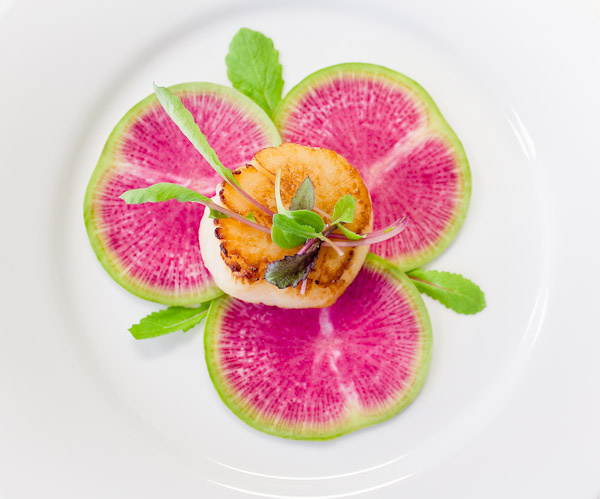 http://www.pitchforkdiaries.com/2011/03/25/pan-seared-sea…crogreen-salad/[/caption] http://www.pitchforkdiaries.com/2011/03/25/pan-seared-sea…crogreen-salad/[/caption] | ||||||||||||||||||||||
|
|
{ welcome! }
 Catie Baumer Schwalb is a chef, food writer and photographer, who splits her life between the city and the country. Not too long ago Catie was a New York City based actress and playwright for more than a decade. She has her Master of Fine Arts from the National Theater Conservatory, and her Grand Diplôme in classic culinary arts from the French Culinary Institute in New York City.
... Read More ≫
Catie Baumer Schwalb is a chef, food writer and photographer, who splits her life between the city and the country. Not too long ago Catie was a New York City based actress and playwright for more than a decade. She has her Master of Fine Arts from the National Theater Conservatory, and her Grand Diplôme in classic culinary arts from the French Culinary Institute in New York City.
... Read More ≫{ get in touch }
{ what's new }
September 12, 2015
August 19, 2013
August 15, 2013
August 13, 2013
August 1, 2013
{ favorites }
{ archives }
Appetizers / Breads & Pastry / Breakfast / Cakes / Canning / Condiments / Dinner / DIY foods / Drinks / Fall / favorites / Grains / Holidays / Local / Noodles & Pasta / Pies & Tarts / Poultry / Salads / Seafood / Snacks / Soup / Spring / Summer / Sweets / Techniques / Vegetables / Vegetarian / Winter /
{ currently reading }
|



